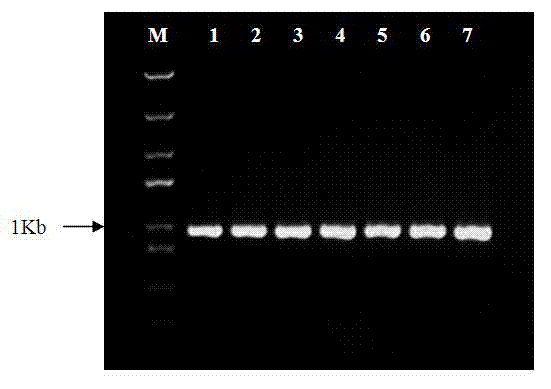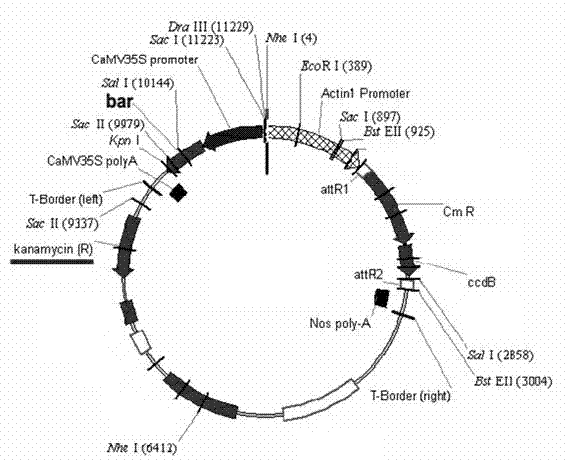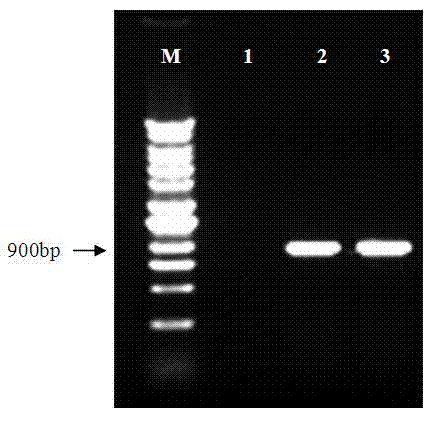Application of Arabidopsis transcription factor in breeding drought-resistant salt-tolerant rice
A technology of transcription factor, drought resistance and salt tolerance, applied in the field of plant biology, can solve the problems of breeding time and breeding limitations of excellent characters
- Summary
- Abstract
- Description
- Claims
- Application Information
AI Technical Summary
Problems solved by technology
Method used
Image
Examples
Embodiment 1
[0038] Embodiment one, rice callus induction
[0039] 1) Hull the half-ripe rice seeds, carefully remove the moldy grains, take the plump and clear grains and soak them in 70% ethanol (surface disinfection) for 1-1.5 minutes, and then use NaClO with 2% active chlorine content Solution (add 1-3 drops of Tween20), put it into a shaker at 120rpm and shake for 45min, then rinse the treated seeds with sterile distilled water 4-5 times;
[0040] 2) Put the sterilized seeds in 30mL NB containing 2.0mg / L 2,4-D 0 Surface of solid callus induction medium (see below for medium composition);
[0041] 3) Wrap the plate with the medium containing the seeds in a parafilm and incubate in the dark at 25±1°C;
[0042] 4) Culture in the dark for about 10 days, induce the primary callus, peel it off, and then subculture 1-2 times in the same fresh callus induction medium until vigorously growing light yellow brittle embryos are obtained. callus formed. The above-mentioned immature embryo-indu...
Embodiment 2
[0043] Example 2. Isolation and cloning of MYB44 gene
[0044] The sequence designed in the present invention comes from NCBI (http: / / www.ncbi.nih.gov / ), Gene ID in NCBI: 836865, in the Arabidopsis Resource Center, its site (AT5G67300) and sequence information are as follows The website shall prevail (http: / / www.arabidopsis.org / servlets / TairObject?id=132479&type=locus), the template used is the cDNA of Arabidopsis thaliana seedlings and roots, according to its site information AT5G67300, we will abbreviate it It is A300; when performing PCR, add 10 ng of Arabidopsis seed cDNA in 50 μL system as a template, and react with 20 pmoles of each of the above primers. The reaction conditions were: 94°C (1 min) pre-denaturation; then 94°C (30 sec), 58°C (30 sec), 72°C (1 min) for a total of 35 cycles; finally 72°C extension for 10 min, the Taq enzyme used High-fidelity PfuTaq enzyme. The primers used were A300FP: AGGATGTTCGCGCGAAGACTCTCCTC; A300RP: GGAAAGCGAAGAAGCG GTAAAGCTC. The am...
Embodiment 3
[0045] Embodiment three, the construction of rice expression vector and its genetic transformation
[0046] After the intermediate plasmid is obtained, it is cloned into the rice expression vector pCAB through a recombined LR reaction, and then screened by PCR. The promoter used in the rice vector is the Actin1 promoter of rice. In bacteria it is kanamycin resistance, in rice it is herbicide resistance PPT or Bar resistance. The specific method is as follows: Add about 75 ng of pCAB vector plasmid DNA, about 150ng of pDGA300 intermediate vector plasmid DNA, and 1 μL of invitrogen LR Clonase into the reaction system TM II, and add TE Buffer, pH 8.0 to make up to 5 μl, react at 25 ℃ for 1 hour. The reaction product was transformed into Escherichia coli competent cells by heat shock method, and the positive clone pCBA300 was obtained by screening.
[0047] The above-mentioned vector pCBA300 was introduced into the rice variety Wanjing 97 (provided by Anhui Academy of Agricultu...
PUM
 Login to View More
Login to View More Abstract
Description
Claims
Application Information
 Login to View More
Login to View More - R&D
- Intellectual Property
- Life Sciences
- Materials
- Tech Scout
- Unparalleled Data Quality
- Higher Quality Content
- 60% Fewer Hallucinations
Browse by: Latest US Patents, China's latest patents, Technical Efficacy Thesaurus, Application Domain, Technology Topic, Popular Technical Reports.
© 2025 PatSnap. All rights reserved.Legal|Privacy policy|Modern Slavery Act Transparency Statement|Sitemap|About US| Contact US: help@patsnap.com



